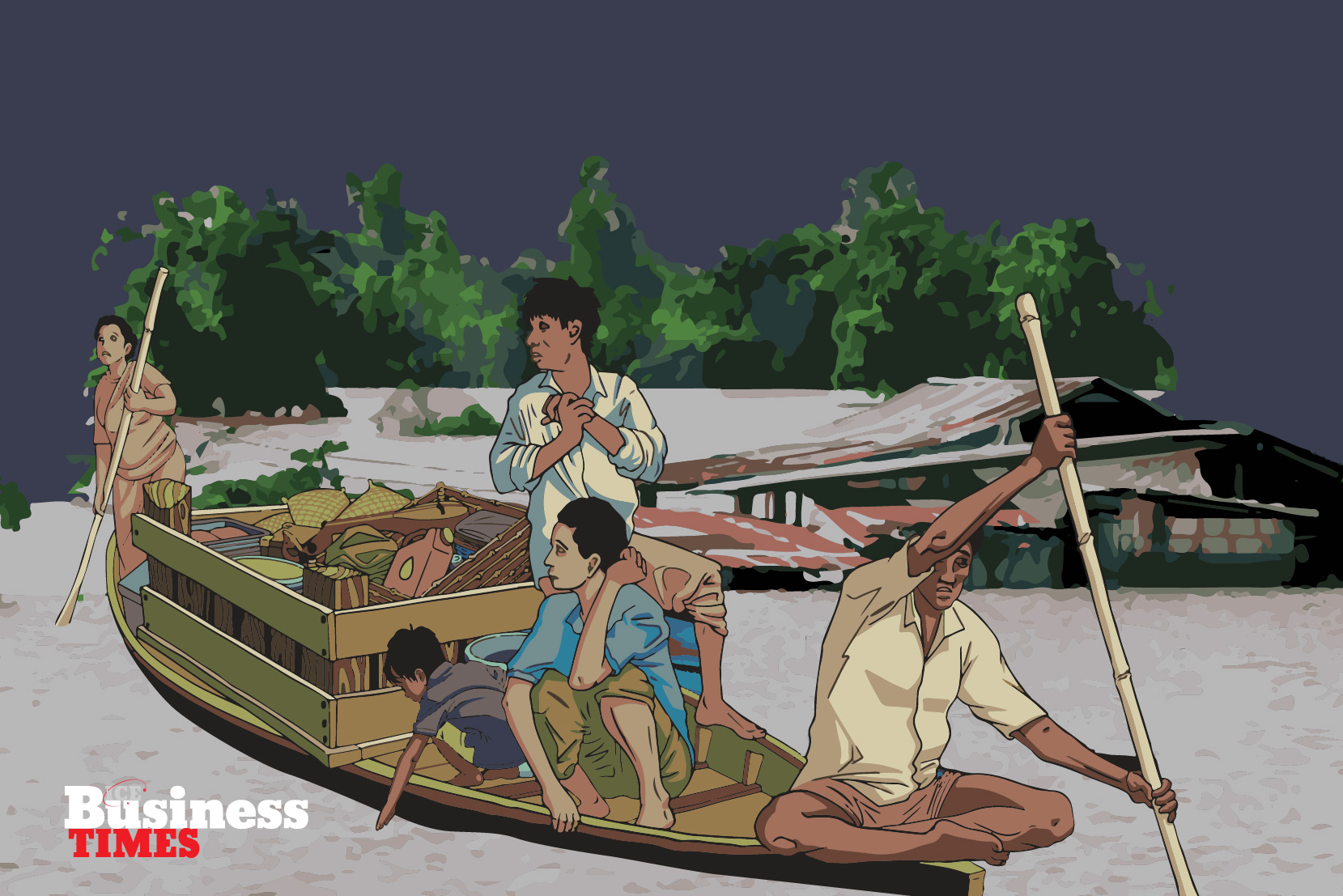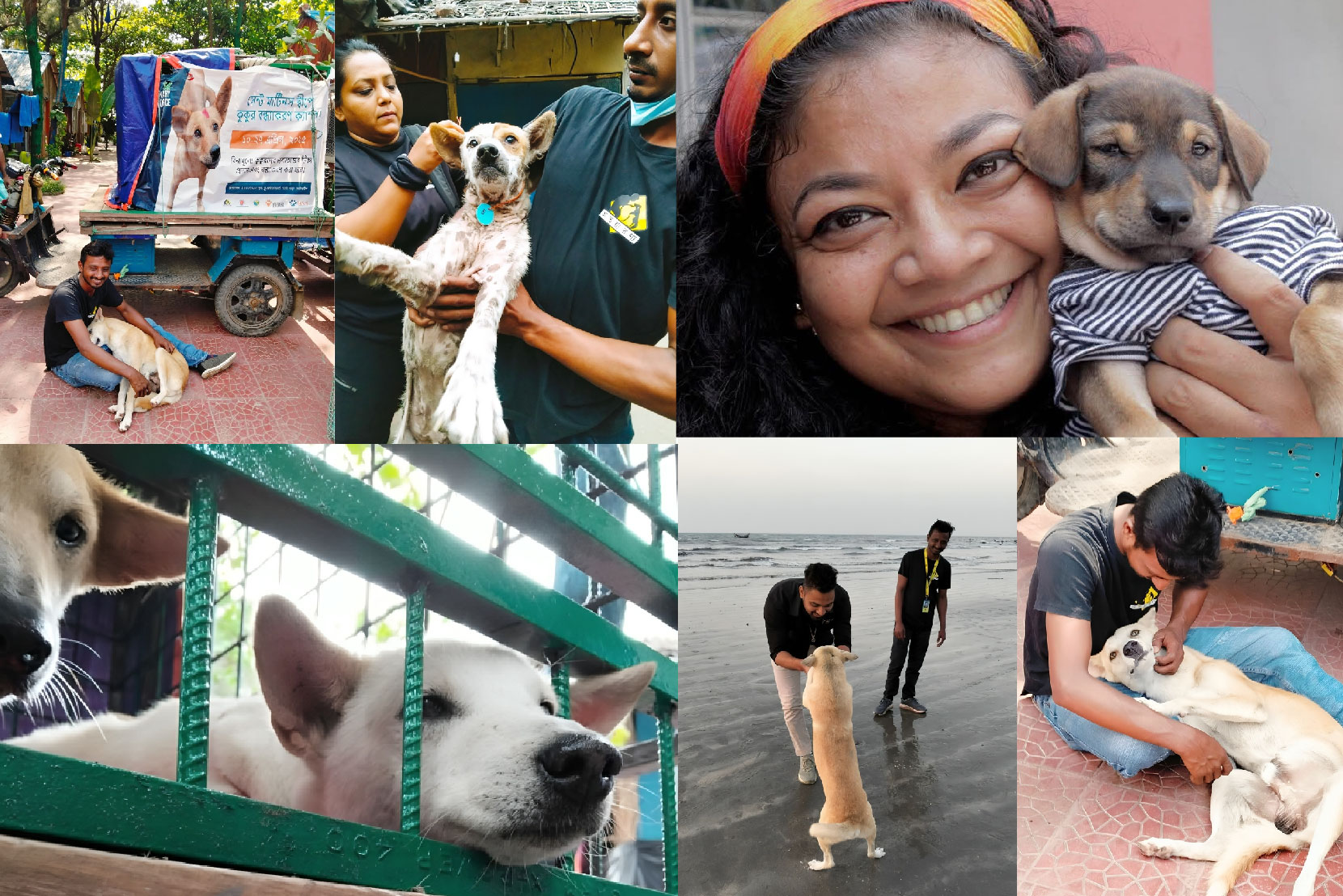Authors: Minu Ahmed & Ashfaque Zaman
According to World Bank, there are 5 million children between the ages of 6 to 14 primarily from low-income families, urban-slums and hard to reach areas which remain out of school. While we have made a noteworthy stride in education, the number staunchly resonates how much of an effort we need to make to achieve quality education for every demographic. Rafiqul Islam Shathy, Chief of Party of the Second Chance Education Program, Save the Children, sheds light on the templates that will change the scenario of primary and secondary education.
STARTING A NEW CHAPTER
The Second Chance Education (SCE) program is an initiative by the Government of Bangladesh to provide quality basic education to out of school children in Bangladesh, keeping in line to achieving SDG Goal 4, “Ensure inclusively and quality education for all and promote lifelong learning.” By “out of school,” we mean those who were never enrolled in primary school or had to drop out for whatever reasons.
The interventions are flexible and designed to overcome whatever barriers or challenges that inhibited these children from receiving a basic education. The program is being executed in collaboration with Directorate of Primary Education (DPE) under Ministry of Primary and Mass Education (MoPME).
The SCE program is being implemented under the guidance of DPE, by three Joint Venture (JV) Partners: BRAC, Dhaka Ahsania Mission (DAM) and Save the Children (SCI), where SCI is serving as the lead agency of the program. While DAM operates on its own, seven other national NGOs are supporting BRAC and SCI to effectuate the program.
The program is implementing four government-recognized education models, namely Ability Based Accelerated Learning (ABAL) model, Cohort model, Multigrade model and SHIKHON Rural model. The program is being implemented in 37 upazilas/thanas under six districts of Bangladesh. Currently, the program is in a nine-month (September 2017 to June 2018) pilot phase to complete Grade 1, targeting 100,000 out of school children, between the ages of 8 to14 years.

THE PEDAGOGY OF INCLUSIVENESS
Many might be unaware of the fact that Bangladesh has the world’s most extensive set up for primary education, with a vast number of trained officials to implement the primary education programs according to the Bangladesh Primary Education Stipend Project. In 2009, the government had developed an education policy (Education Policy 2010). It stated political manifesto and cemented the government’s commitment to achieving the goals of “Education For All” and the related Millennium Development Goals. Overall, Bangladesh has achieved a high level of gender parity in term of educational access; however, in the more remote rural areas, girls still have significant problems in attending school regularly.
Despite the commitment of the government, there are some geographical disparities which affected education. Children from hard to reach areas like haors (seasonal wetlands), baors (oxbow lakes) and hill tract areas are still lagging behind from receiving the benefit from education. This situation has created inequity and inequality in education. The government targets to allocate more funding to schools in disadvantaged localities so that the children of these areas will get particular attention and subsequently reduce the inequalities. Prioritizing needs based infrastructure, teacher training, localized materials and other interventions to schools in disadvantaged areas will help reduce disparities between regions.
Corollary to this, there are other reasons why children are out of school: poverty, insecurity while traveling to school, eve-teasing, etc. The present 18% dropout rate and non-enrolment of 2% of total children have created a space to introduce an education “safety net” for the out of school children; this propelled the subsequent development of the Second Chance Education program. It was developed specifically to cater to those children who could not receive basic education in the “first chance.” PEDP III will support the increasingly equitable distribution of education attainment by expanding enrolment to out-of-school children, addressing issues which influence household decisions to enroll or withdraw children from school, and creating school environments that enable children to learn the material and develop skills needed to boost productivity and earnings.
EDUCATION IS NEVER TOO LATE
Bangladesh’s development policies have supported economic growth, raised the overall standard of living, and reduced the incidence of both human and income poverty. A policy agenda that includes enabling all children who begin primary school to finish and expanding opportunities at post-primary levels will increase the proportion of Bangladesh‘s labor force with basic education credentials benefiting both the macro and household economies.
Our government has the largest centralized education system. We have made many strides in primary education, for example, gender parity is now high, enrolment rates are at 98% net enrolment (the number of children enrolled at the age of 6 years) and 103% gross enrolment (the number of children enrolled regardless of age). Secondly, the government developed the SCE program, with an aim to achieve Sustainable Development Goal 4. SDG 4 is essential for quality and inclusive education. However, the focus should not be applied to merely the attainment of education. The purpose should be on ensuring quality education for these out of school children.
The SCE program is the first Public-Private Partnership (PPP) of its kind, between the government and well-established national and international NGOs. The pilot phase will play a very crucial role in deciding whether the public-private partnership works, whether the joint venture partnership works, and how well the education models work.
Within the first four months of implementation, the program reached its target of enrolling and providing basic education to 100,000 out of school children, through the establishment of 3,332 learning centers. This is an enormous achievement for the program and shows that the SCE program, through the PPP, and the JV Partnership is indeed an innovative and plausible cause.

SCALABLE SOLUTIONS START SMALL
The primary objective of these SCE schools is providing basic education in the national competencies (up to Grade five) identified by the NCTB (National Curriculum and Textbook Board). The history of primary and secondary education has not changed; there needs to be a mechanism to include children that had lost their first opportunity to obtain an education. For most of them, it is not a matter of choice but external factors that dictate this. We want a significant number to mainstream. We want older children to be in livelihood skills training. The hard to reach education program in UNICEF has a component livelihood skill development. The children above 14 years of age were trained for jobs at the local level. The fields included tailoring, mobile phone servicing, beauty parlor services, motorcycle mechanics, handicrafts, carpentry, etc. These education schemes allow older children to generate higher incomes through their specialty.
The government is trying to expand this program to 1 million children during the time frame of the Primary Education Development Program 4 (PEDP4). The initial stage will have 100,000 children, and the government will cover the rest in the next five years.
DRAWING OUT THE CHALKBOARD: FINDING THE MODEL THAT FITS
There are four education models being implemented in Dhaka, Sylhet, Chittagong, Sunamganj, Kishoreganj, and Gaibandha districts. The models were identified and selected based on the nature and characteristics of the dropout children and their involvement in other familial obligations (for example caring for a younger sibling or working to help generate income).
Three out of four education models are from Bangladesh. The ABAL model is originally from India but has been nationalized after a successful experience of implementation. In between 2012-2016, a high number of government education officials of Bangladesh received a hands-on experience on ABAL model through visiting Rishi Valley (India), where the ABAL model was first developed. These models have been around for an average of ten years; this is the experimental stage to see what works best. Nevertheless, after a long exercise of the models, the government came to the conclusion that no single model can cover 100% of our target population. Geographical factors play a crucial role as to why a model works well in some areas and in others it doesn’t. The government had assessed the performance of the models in the selected implementing areas and chosen accordingly.
History has shown time and again that when people work together, they are much stronger and can achieve that much more. Similarly, the SCE program was a challenging and mammoth task that couldn’t be borne by one organization alone, and thus the need for the Public-Private Partnership and consequently, the Joint Venture Partnership. So far the program progress is showing promise, and so there is some light at the end of this tunnel.

UNDERSTANDING THE DEMOGRAPHIC: THE PRECURSOR TO A CULTURE OF CHANGE
According to the Education Scenario In Bangladesh: Gender Perspective Report, 17% of girls and 23.9% of boys drop out from primary schools, and this increases to 45.9% and 33.7% respectively in secondary school. The primary reason for dropout rates is poverty. Moreover, class sizes are beyond the learning capacity. The government has stated that they will achieve one is to 40, but most of the schools still have one is to 70, 80 or even 100. A teacher cannot address such a large number within the allotted 40 minute period which leads to a fall in quality. When classrooms are so dense, low profile students (typically the ones that sit in the back of the classroom) are not attentive and eventually lose interest in education. Students want to have interactive child-friendly work, and this retains their interest in education.
The location also plays a vital role in education. Many parents do not feel safe when their children have to travel a long distance specifically when it involves girls.
For adolescent girls, it becomes a matter of eve-teasing and child marriage. Parents sometimes want to see an immediate benefit. Education provides long-term benefits. In this context, parents want to send them to the workplace. The belief is that they will earn money starting at a younger age and create a better quality of life.
The SCE program is the first Public-Private Partnership (PPP) of its kind, between the government and well-established national and international NGOs. The pilot phase will play a very crucial role in deciding whether the public-private partnership works, whether the joint venture partnership works, and how well the education models work.
INNOVATIVE EDUCATION: CREATING FRAMEWORK THAT WORKS FOR EVERYONE
Rural Model
The Rural model is responding to the particular educational needs of vulnerable children who live in conditions of extreme poverty in remote rural and hard to reach areas. The model ensures Quality Primary Education (QPE) through adopting active teaching and learning methods and working hard to create a joyful learning environment for the Out of School Children (OoSC). The model is for OoSC aged 8 to14 years and tested in rural areas only following NCTB textbooks with some teaching-learning materials for each grade. The graduation period of the model is 48 months including readiness class with child-centered multiple ways of teaching-learning methodology. Teachers go through a 58-day training as well as monthly refreshers. There is community friendly follow up and tracking mechanism. Learners attend Primary Education Completion Exam (PECE) through the model.
ABAL model
Ability Based Accelerated Learning (ABAL) is a form of instructional design, teaching strategies and evaluation methods that focus on creating opportunities and experiences for students as per their level. It assists them by identifying their learning style and then implementing strategies to help them learn most productively and positively possible. The targeted learner of the model is OoSC of 8 to 14 years. The model is tested in both urban and rural areas based on NCTB curriculum, five grade based and subject-based Modules. The duration of the learning process is 45 months but will depend on learners pace of learning. It is a multi-grade, ability-based accelerated learning with a flexible teaching-learning process. Teachers go through a 21-day foundation training, ten days follow up and monthly refreshers. The model has a strategy to follow up and tracking mechanism, strong linkage with livelihood skills. After completing the 45-month course content, the learner sits for the PECE.
Multi-Grade model
Multi-Grade teaching-learning is a model that differentiates a student according to levels of subject knowledge and individual ability. Unlike the conventional system, the same student can have the option to be placed and learn about different grade’s subject according to their rating in individual subjects. This approach helps a teacher to teach students according to their competencies. The model lasts 42 months and targets OoSC aged 8 to14 years. The model is tested in both urban and rural areas and uses the NCTB curriculum and materials with different supplementary materials. The model consists of multi-grade teaching-learning methods with five-step principles; teachers go through a 10-day foundation, 4-day follow-up and 2-day subject-based training.
Cohort Model
The Cohort model is a one-teacher, one school model where the same teacher works with a cohort of children, teaching all lessons for four years until the cohort completes the primary cycle. The curriculum is aligned to the NCTB curriculum and includes a set of supplementary books for children and teachers. Teachers use an activity-based teaching-learning approach with multi-strategy language teaching facilitates. The model requires 12 days basic training, two days orientation and monthly refreshers for teachers. The model has been tested in both urban and rural areas and focuses on 8 to 12-year-olds out of school children with relaxation in age.
SOURCE
Bangladesh Primary Education Stipend Project: A descriptive Analysis, PEDP3 Brief (Revised), United Nationals Development Assistance Framework (UNDAF) 2012, Open-water Fisheries in Bangladesh: A Critical Review, Education Scenario In Bangladesh: Gender Perspective Report, & World Bank.
PHOTO
Minu Ahmed/Save the Children















